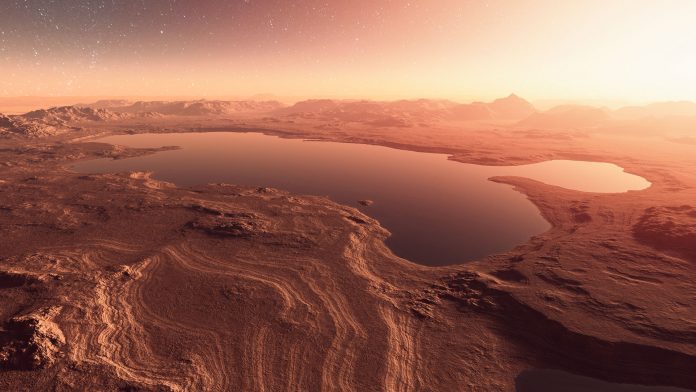Scientists from the University of Arizona, USA, have discovered how the oceans on Mars dried up and the water in its atmosphere was destroyed.
Since 2014, Shane Stone, a graduate student in the UArizona Lunar and Planetary Laboratory, has worked on the NASA MAVEN mission. The MAVEN spacecraft began orbiting Mars in 2014 and has been recording the composition of the upper atmosphere of the planet ever since. The objectives of the MAVEN mission is to identify the factors behind the disappearance of the oceans on Mars and to further understand how the solar wind strips volatile compounds from this atmosphere.
Stone said: “We know that billions of years ago, there was liquid water on the surface of Mars. There must have been a thicker atmosphere, so we know that Mars somehow lost the majority of its atmosphere to space. MAVEN is trying to characterise the processes responsible for this loss, and one portion of that is understanding exactly how Mars lost its water.”
As MAVEN orbits Mars, it dips into the planet’s atmosphere every 4.5 hours. The onboard Neutral Gas and Ion Mass Spectrometer (NGIMS) has been measuring the abundance of charged water molecules called ions in the upper Martian atmosphere, about 100 miles from the planet’s surface. From this information, scientists can infer how much water is present in the atmosphere.
Past observations using MAVEN and the Hubble Space Telescope showed that loss of water from the Martian upper atmosphere varies with the seasons. Compared to Earth, Mars takes a more oval-shaped path around the sun and is closest to it during summer in the Martian southern hemisphere.
Stone and his team found that when Mars is nearest the sun, the planet warms, and more water – found on the surface in the form of ice – moves from the surface to the upper atmosphere where it is lost to space. This happens once every Martian year, which is two Earth years. The regional dust storms that occur on Mars every Martian year and the global dust storms, which occur across the planet about once every ten years, lead to further heating of the atmosphere and a surge in the upward movement of water.
According to previous models, water ice on Mars is converted to a gas and is destroyed by the Sun’s rays in the lower atmosphere. This process, however, would play out as a slow, steady trickle, unaffected by the seasons or dust storms, which doesn’t mesh with current observations.
Stone added: “This is important because we didn’t expect to see any water in the upper atmosphere of Mars at all. If we compare Mars to Earth, water on Earth is confined close to the surface because of something called the hygropause. It’s just a layer in the atmosphere that’s cold enough to condense (and therefore stop) any water vapour travelling upward.”
When the team extrapolated their findings back 1 billion years, they found that this process can account for the loss of around 17 inches of Mars’ oceans.
Stone said: “If we took water and spread it evenly over the entire surface of Mars, that ocean of water lost to space due to the new process we describe would be over 17 inches deep. An additional 6.7 inches would be lost due solely to the effects of global dust storms.”
During global dust storms, 20 times more water can be transported to the upper atmosphere. For example, one global dust storm lasting 45 days releases the same amount of water to space as Mars would lose during a calm Martian year.



